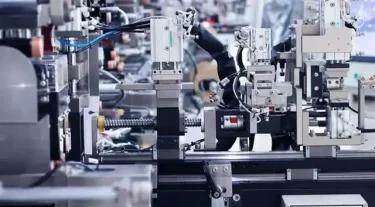
# Tape Manufacturing: Processes and Innovations in the Industry
## Introduction to Tape Manufacturing
Tape manufacturing is a complex process that involves multiple stages to produce adhesive products for various applications. From packaging to medical uses, tapes play a crucial role in our daily lives. The industry has evolved significantly over the years, incorporating new technologies and materials to meet growing demands.
## The Basic Manufacturing Process
The tape manufacturing process typically involves several key steps:
### 1. Backing Material Preparation
The first stage involves preparing the backing material, which can be made from various substances including:
– Plastic films (PP, PET, PVC)
– Paper
– Foam
– Fabric
### 2. Adhesive Application
Once the backing material is ready, the adhesive is applied using one of several methods:
– Hot melt coating
– Solvent-based coating
– Water-based coating
– UV curing systems
### 3. Drying and Curing
After adhesive application, the tape goes through drying or curing processes to ensure proper bonding characteristics. This step varies depending on the type of adhesive used.
### 4. Slitting and Rewinding
The final manufacturing stage involves cutting the large rolls of coated material into smaller, more manageable widths and rewinding them onto cores for packaging and distribution.
## Recent Innovations in Tape Manufacturing
The tape manufacturing industry has seen significant technological advancements in recent years:
### Eco-Friendly Materials
Manufacturers are increasingly developing tapes made from:
– Biodegradable materials
– Recycled content
– Plant-based adhesives
### Smart Tapes
New developments include tapes with special properties:
– Conductive tapes for electronics
– Temperature-sensitive adhesives
– Medical tapes with drug delivery capabilities
### Automation and Quality Control
Modern manufacturing facilities incorporate:
– Automated inspection systems
– AI-powered defect detection
– Robotics for material handling
## Challenges in Tape Manufacturing
Despite advancements, the industry faces several challenges:
Adhesive performance under extreme conditions remains a significant concern, especially for applications in harsh environments. Manufacturers must balance cost-effectiveness with performance requirements while meeting increasingly stringent environmental regulations.
## Future Trends
The tape manufacturing industry is expected to continue evolving with:
– Nanotechnology applications in adhesive formulations
– Increased use of sustainable materials
– Development of specialized tapes for emerging industries like renewable energy
– Integration of IoT for smart manufacturing processes
As demand grows across various sectors, tape manufacturers will need to innovate continuously to meet changing market needs while addressing environmental concerns. The future of tape manufacturing promises to be both challenging and exciting as new technologies emerge and applications expand.
Keyword: tape manufacturing
